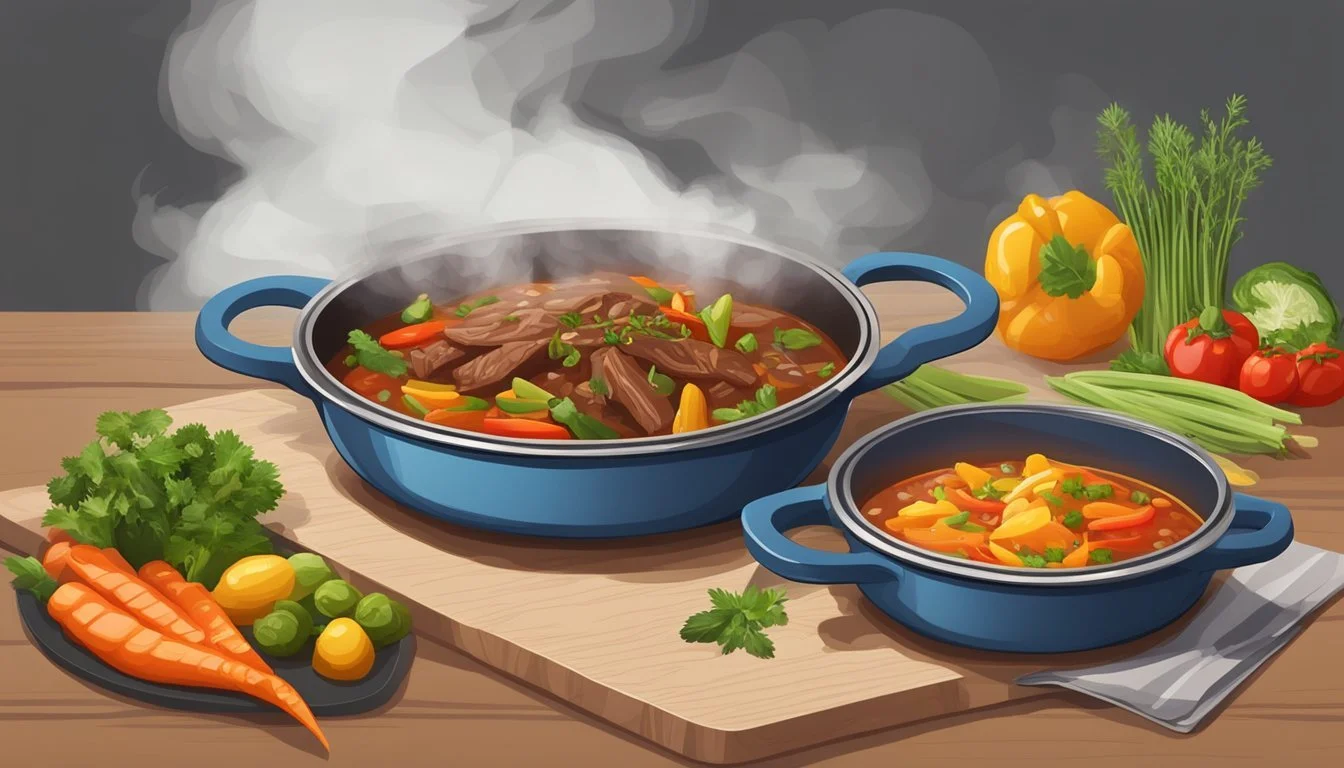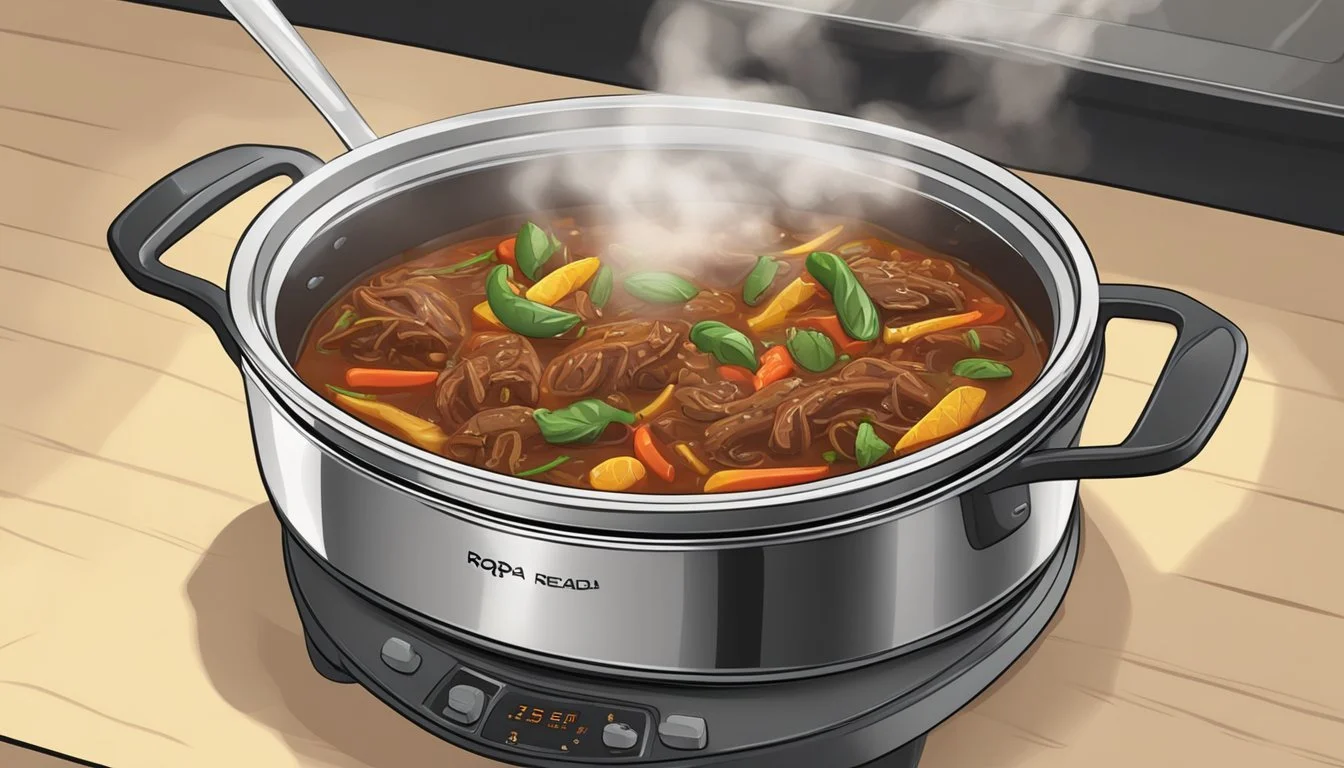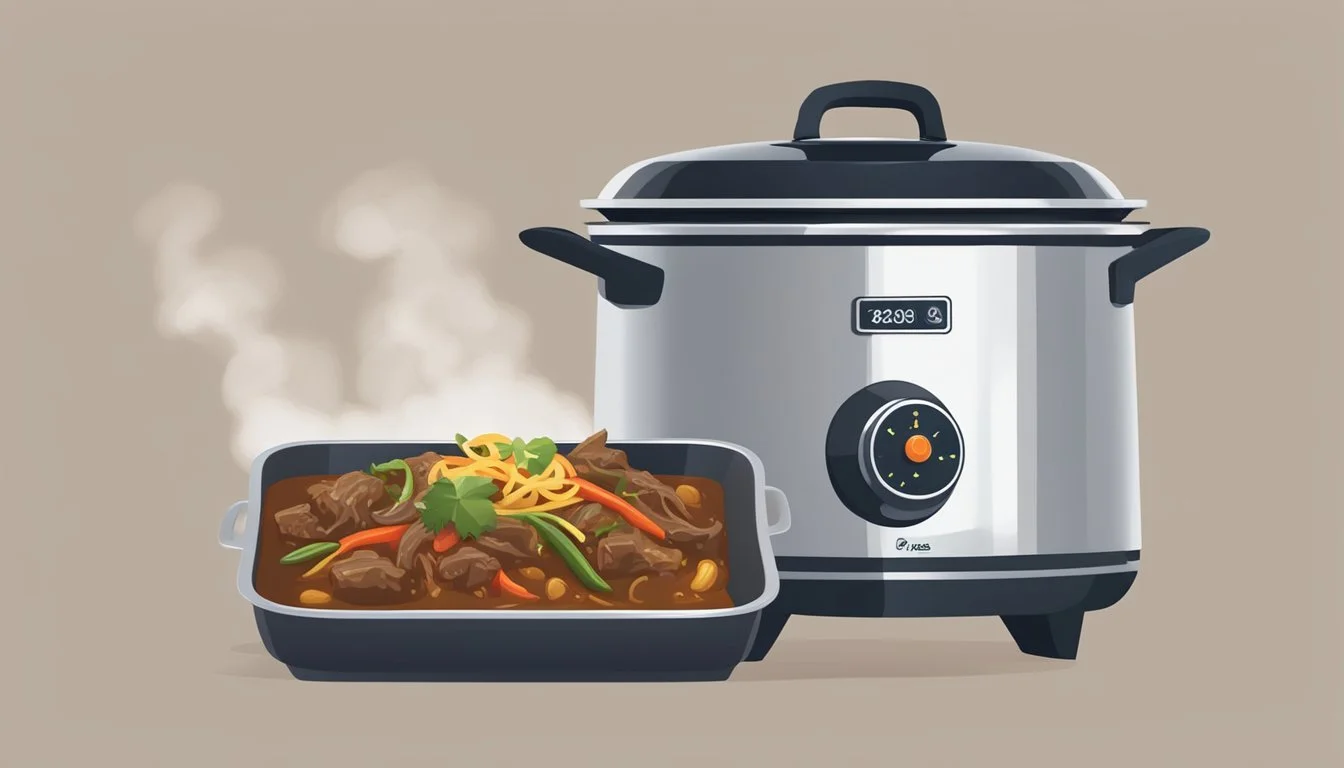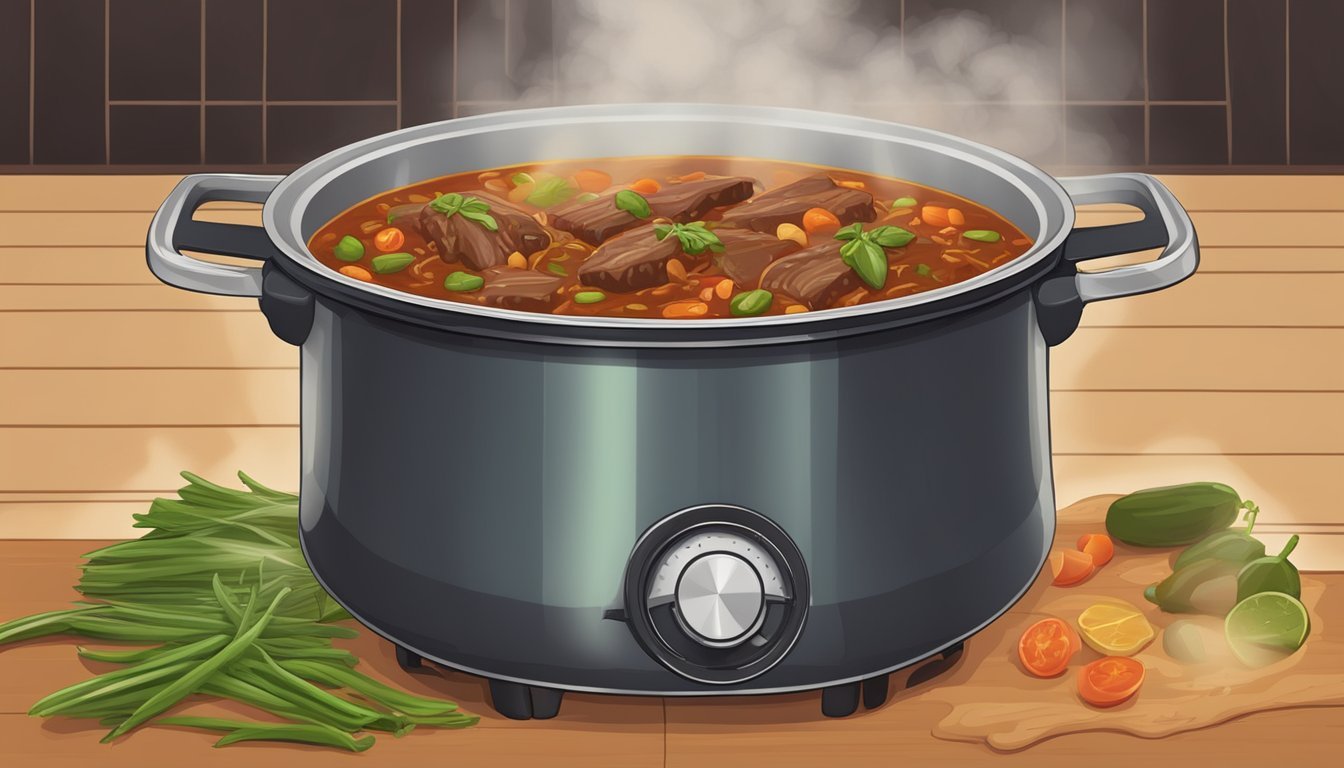Best Way to Reheat Ropa Vieja
Ensuring a Tender Beef and Rich Sauce
Ropa Vieja, the national dish of Cuba, is celebrated for its tender beef (What wine goes well with beef?) and rich, flavorful sauce. This dish, whose name means "old clothes," is traditionally made with shredded beef and a seasoned tomato-based sauce. Achieving the perfect balance of flavors and textures is paramount in cooking Ropa Vieja, and it is equally important when reheating it to ensure that the beef remains tender and the sauce retains its robust essence.
Due to the dish’s delicate nature, reheating Ropa Vieja requires a method that gently warms the beef without drying it out, while simultaneously enhancing the sauce's flavor profile. Whether one prefers using a stovetop, oven, or microwave, the technique employed can make a significant difference in the dish’s quality post-reheating. It is essential to approach the reheating process with as much care as the initial cooking phase to maintain the integrity of this beloved meal.
Careful consideration of the reheating medium, temperature, and timing can prevent the succulent strands of beef from becoming tough and the savory sauce from losing its depth. By following a few key practices, the reheated Ropa Vieja can rival the taste and texture of its freshly prepared counterpart, providing a culinary experience that is both satisfying and reflective of its storied Cuban heritage.
Understanding Ropa Vieja
Ropa Vieja, a traditional Cuban dish, is renowned for its tender shredded beef and rich, flavorful sauce. Its name, meaning "old clothes," reflects the shredded appearance of the beef, reminiscent of torn clothing.
Historical Background
Ropa Vieja has its roots deeply woven into Cuban culture, with a legend suggesting that a man, desperate to feed his family, shredded and cooked his own clothes. Miraculously, the cloth turned into a delicious meal. While this is surely a folk tale, the dish’s real origins trace back to the Canary Islands, and it made its way to the Caribbean where it evolved with local spices and ingredients.
Key Ingredients
The essential components of Ropa Vieja include:
Beef: Typically a lean and fibrous cut like flank steak.
Vegetables: Onions, peppers, and garlic add depth.
Sauce: A tomato-based sauce enlivened with herbs and spices.
Additional Flavorings: Olives and capers (What wine goes well with capers?) provide briny notes, while bay leaves impart a subtle aroma.
The Ideal Cut of Beef
Flank steak is traditionally used for its strong beefy flavor and its structure that allows for successful shredding after cooking. However, chuck roast can be a suitable alternative for its marbling, which contributes to tenderness and moisture in the dish, crucial for reheating without losing quality.
Initial Preparation of Ropa Vieja
Preparing Ropa Vieja involves a specific recipe and cooking techniques that are essential to ensuring the beef is tender and the sauce is flavorful. The initial steps set the stage for the final dish's quality and taste.
Traditional Ropa Vieja Recipe
A traditional Ropa Vieja recipe calls for a tough cut of meat, like brisket, slowly cooked until it becomes tender. The meat is typically seasoned, seared in olive oil to lock in flavors, and then placed in a cooking liquid with ingredients like onions, peppers, tomatoes, and spices, creating a rich base for the sauce. The choice of meat is crucial; brisket is favored for its fat content and connective tissue, which break down over long cooking times to produce a succulent texture.
Ingredients:
2-3 pounds of brisket
Olive oil for searing
1 large onion, sliced
1 bell pepper, sliced
3 cloves garlic, minced
1 teaspoon oregano
1 teaspoon ground cumin
1 cup tomato sauce
Salt and pepper to taste
Preparation:
Heat olive oil in a Dutch oven over medium-high heat.
Season the brisket with salt and pepper, and sear on all sides until browned.
Add the sliced onion and bell pepper to the pot and cook until softened.
Stir in garlic, oregano, and cumin, cooking for another minute before adding the tomato sauce.
Cooking Techniques for Tenderness
The key to achieving tenderness in Ropa Vieja is slow cooking. A Dutch oven is the cookware of choice for its heavy bottom and tight-fitting lid, which distribute heat evenly and retain moisture. This method allows the brisket to cook gently and consistently. The meat should simmer in the sauce for several hours, letting the connective tissue break down without drying out the beef, ensuring each shred is moist and flavorsome. After the meat has reached the desired tenderness, it is then shredded and returned to the sauce to soak up more flavor before serving.
Storing Leftover Ropa Vieja
Proper storage is crucial for maintaining the tenderness of the beef and the robust flavor of the sauce in leftover Ropa Vieja. By following these specific methods, one can ensure their dish remains as delightful as when it was first prepared.
Airtight Solutions
For optimal preservation, leftovers should be placed in an airtight container. This prevents moisture loss and keeps out unwanted flavors from other foods in the fridge or freezer. If freezing, one must also ensure that Ropa Vieja cools down before sealing it to prevent ice crystal formation, which can affect texture.
Fridge: Store in an airtight container for 3 to 4 days.
Freeze: Use a freeze-safe airtight container for up to 2 months.
Maximizing Freshness
When refrigerating Ropa Vieja, it is best to store it within two hours of cooking to ensure maximum freshness. To freeze, one should divide the dish into portion sizes, which helps in both preventing food waste and facilitating easy reheating later on.
Divide into portions.
Cool before freezing to maintain quality.
Label containers with the date to keep track of freshness.
Reheating Techniques
To retain the tenderness of the beef and the rich flavor of the sauce in Ropa Vieja, careful reheating is essential. Using the right technique prevents the meat from drying out and ensures the dish tastes as good as when it was freshly made.
Oven Reheating Method
The oven method is conducive to reheating Ropa Vieja while preserving the moisture of the beef. Preheating the oven to 275°F and transferring the Ropa Vieja into an oven-safe dish is recommended. It is crucial to add a few tablespoons of broth or the original cooking liquid to maintain the dish’s moisture. Cover the dish with aluminum foil to lock in the heat and prevent moisture loss. Heat the Ropa Vieja for 20-30 minutes, checking periodically to ensure it does not overcook.
Stovetop Reheating Approach
Reheating Ropa Vieja on the stovetop is quick and efficient. One should place the dish in a skillet or saucepan over medium heat. Adding liquid, like a broth, is important to keep the meat from drying out, which can easily happen when subjected to direct heat. Stir occasionally, allowing the dish to warm evenly. The meat should regain its tenderness and the sauce its vibrant taste in approximately 10 minutes.
Microwave Reheating Tips
Microwaving is the fastest method, though it requires attention to detail to avoid uneven heating. Place the Ropa Vieja in a microwave-safe container, drizzle with some liquid to keep it moist, and cover with a microwave-safe lid or plastic wrap with a few holes poked in it for ventilation. Microwave on medium power for short 30-second bursts, stirring in between to promote uniform warming without overcooking. It's important to monitor the texture and warmth to ensure optimal results.
Preserving Flavor and Texture While Reheating
When reheating Ropa Vieja, the primary goal is to retain the beef's tenderness and the richness of the sauce. The following practices help ensure these qualities are preserved during the reheating process.
Adding Liquids
One should consider the moisture level of Ropa Vieja when reheating to avoid dryness. Adding a small amount of liquid, such as beef broth or chicken broth, can maintain the meat's tenderness and enhance the sauce's flavor. A good practice is to add a few tablespoons of broth over the beef before reheating.
Beef Broth: Adds depth to the beef's flavor.
Chicken Broth: Provides a lighter enhancement while still keeping moisture.
Managing Heat and Time
Controlling the heating temperature and duration is crucial for preserving the meal's texture. It's recommended to reheat slowly and at a moderate temperature to prevent the beef from becoming tough and the sauce from losing its nuanced flavors.
Oven Reheating:
Temperature: 325°F (160°C)
Time: Up to 30 minutes, checking periodically
Stovetop Reheating:
Use a low heat
Stir occasionally
Time: Until just heated through
Each of these methods will gently warm the Ropa Vieja, while safeguarding its moisture and flavor.
Enhancing the Dish on Reheat
When reheating Ropa Vieja, infusing additional flavors and ensuring the tenderness of the beef are crucial. Thoughtfully selected spices and extra ingredients can elevate the dish to new heights.
Spices and Seasonings
The careful addition of spices and seasonings can greatly enhance the Ropa Vieja's flavor profile during reheating. It's important to taste the dish first and adjust accordingly:
Salt & Pepper: A pinch of salt and black pepper can brighten the existing flavors.
Garlic: Mince fresh garlic cloves and stir into the sauce for a pungent aroma.
Olive Oil: A drizzle of high-quality olive oil can introduce a smooth finish.
Oregano & Cumin: Incorporate a sprinkle of dried oregano and cumin for warmth and complexity.
For a deeper flavor, one could consider:
Spice Quantity Sweet Paprika 1/2 teaspoon Allspice A pinch Dried Oregano 1/2 teaspoon Bay Leaves 1-2, if not used prior
Integrating these spices should be done subtly to prevent overpowering the original dish, keeping in mind that the goal is to complement the beef and existing sauce.
Additional Ingredients
To further enrich Ropa Vieja upon reheating, one might introduce additional fresh ingredients for texture and umami:
Olives: Add a handful of pitted olives to infuse a briny depth.
Bell Peppers (What wine goes well with bell peppers?): Introduce slivers of bell peppers for a sweet, crunchy contrast.
Onions: Include thinly sliced onions for an aromatic sweetness.
Capers: A tablespoon of capers will provide a salty, vinegary pop.
Combining these ingredients should be conducted with a gentle hand to integrate seamlessly with the tender beef and robust sauce. They should simmer together briefly, enhancing the flavors without compromising the dish's authentic profile.
Serving Suggestions
When reheating Ropa Vieja, one's objective should be to preserve the tenderness of the beef and the richness of the sauce. The right accompaniments not only complement the flavors but also complete the meal, making it a satisfying culinary experience.
Accompaniments
To maintain the integrity of Ropa Vieja as a traditional Cuban dish, serving it with white rice is essential. The neutral taste of white rice provides a perfect base, allowing the seasoned beef and sauce to shine. For a more substantial meal, black beans can be added alongside the rice for a classic pairing that is commonly enjoyed in Cuba.
Another ideal accompaniment is vegetables, which can be served steamed or sautéed. They add both color and nutrition to the dish without competing with the complex flavors of the meat.
Plantains make an excellent side for Ropa Vieja. They are traditionally served in two ways: either as tostones, which are green plantains fried, flattened, and fried again until they're crispy, or as maduros, where the ripened sweet plantains are fried until they caramelize, offering a sweet counterbalance to the savory meat.
For those who enjoy a more varied meal, consider small empanadas as an appetizer. These savory pastries can be filled with meat, cheese, or vegetables and are a staple in Cuban food culture.
Prepare a traditional Cuban dinner by incorporating Ropa Vieja as the national dish, and ensure the sides play a supporting role to highlight the central flavors of this beloved Cuban food.
Nutritional Considerations
When reheating ropa vieja, it is important to consider the dish’s nutritional profile to maintain a balanced diet. Ropa vieja, a traditional Cuban dish, consists primarily of shredded beef, vegetables, and a rich sauce. The beef provides a significant source of protein, which is essential for repairing and building muscle fibers. The method of preparation, particularly the reheating process, can affect the protein quality, making it essential to reheat gently to preserve the tenderness of the muscle fibers.
The nutritional content of the dish can vary based on the ingredients used. To reduce the amount of sodium, using kosher salt is advisable since it can be easier to control its distribution due to the larger flakes. Yet, one should be mindful of the quantity to maintain nutritional balance.
Here is a breakdown of key ingredients and their nutritional considerations:
Protein: Found in the beef, vital for maintaining muscle tissue.
Fats: Present in both the beef's marbling and the vegetable oil used for cooking; consider using oils with healthier fat profiles.
Carbohydrates: Provided by the accompanying vegetables and possibly by additional sides; keep portions in mind for a balanced intake.
When cooking with vegetable oil, choosing oils high in unsaturated fats, like olive oil, can be beneficial for heart health. However, portion control is crucial as oils are calorie-dense.
Lastly, for those with specific dietary requirements, such as a kosher diet, ensuring that the beef and additional ingredients comply with kosher food laws is essential. Selecting ingredients carefully and considering their preparation is important to respect dietary restrictions.
By considering these nutritional factors, one can enjoy reheated ropa vieja that supports a well-rounded diet.
Safety Tips for Food Reheating
When reheating Ropa Vieja, or any other dish, maintaining both tenderness of the beef and flavor of the sauce starts with adhering to food safety guidelines. Ensuring that food is reheated safely minimizes the risk of foodborne illnesses.
Temperature Check: The most critical aspect of food safety is the internal temperature of the Ropa Vieja. Reheated food should reach an internal temperature of at least 165 °F to ensure it's safe for consumption. Use a food thermometer to accurately check this.
Reheating Process: Spread the Ropa Vieja evenly in a pan for stovetop reheating or in an oven-safe dish if using an oven. Always cover the dish to preserve moisture and evenly distribute heat.
Prevent Contamination: Always use clean utensils and dishes when handling food to prevent cross-contamination.
Heating methods:
Oven: Preheat to at least 325 °F and cover the dish with aluminum foil.
Stovetop: Simmer in a saucepan at a moderate temperature.
Method Temperature Notes Oven 325 °F+ Use foil to retain moisture. Stovetop Medium Heat Stir occasionally to heat evenly.
Avoid Overheating: Overheating can lead to dryness and loss of flavor. Check the dish frequently and stir where necessary to ensure even heating without overcooking.
Storage and Handling: If the Ropa Vieja was stored in the refrigerator, ensure it was at a safe temperature of below 40 °F before reheating. Any leftovers should be discarded if left out at room temperature for more than two hours, or one hour if the ambient temperature is above 90 °F.







